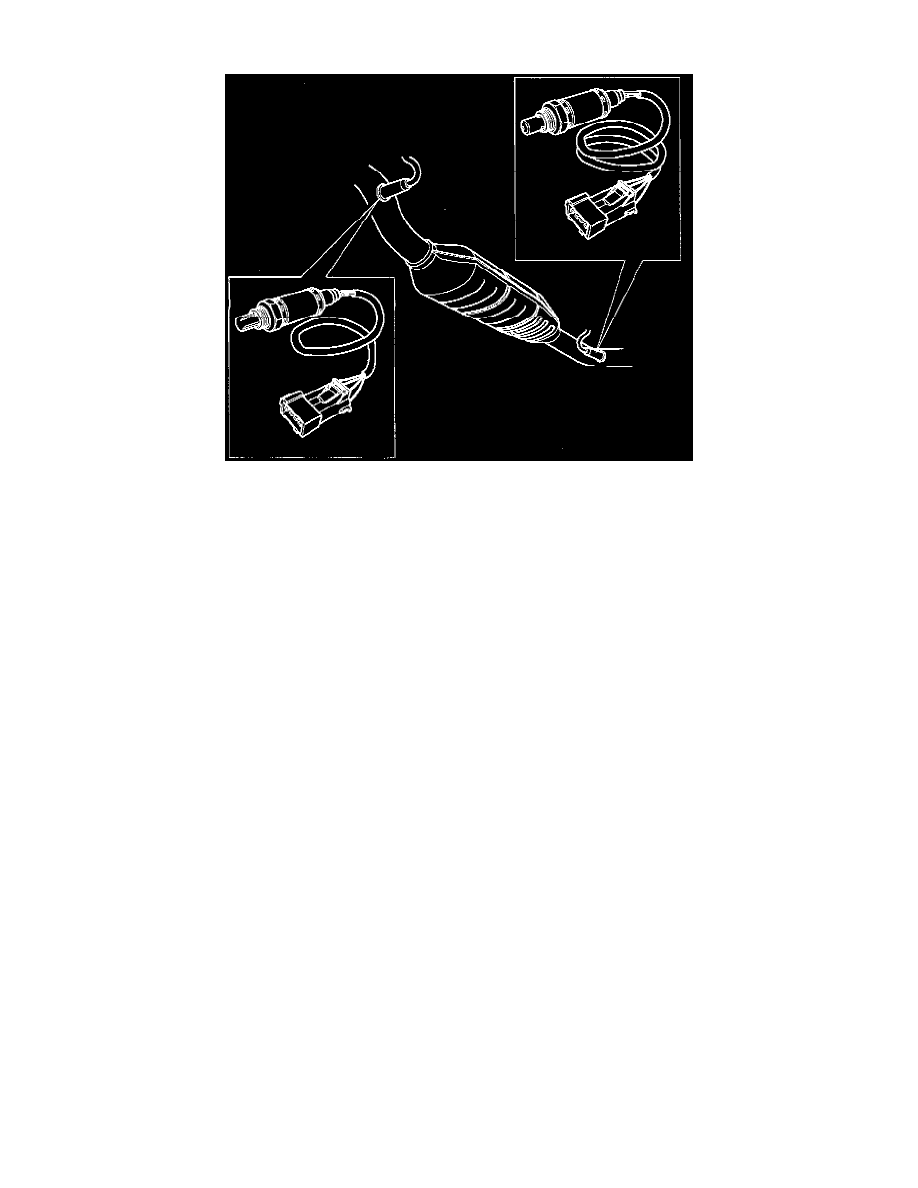850 Turbo L5-2.3L Turbo VIN 57 B5234FT (1996)

Oxygen Sensor: Description and Operation
HEATED OXYGEN SENSORS
Front Heated Oxygen Sensor
The front HO2S is used to supply the ECM with information regarding the composition of the air/fuel mixture.
The Heated Oxygen Sensor (HO2S) is positioned in the exhaust pipe ahead of the Three-Way Converter (TWC). The HO2S probe, which is
electrically heated, produces an output voltage whose level varies with the oxygen content in the exhaust gases.
To measure the oxygen content, the HO2S requires a supply of ambient air as a reference. Since this is supplied through the wiring, the lead must
not be clamped or damaged in any other way.
Neither is it permitted to grease the HO2S connectors, since the oil in the grease would interfere with the reference air
Rear Heated Oxygen Sensor
Cars in certain markets are also equipped with a rear HO2S, which is installed downstream of the TWC and measures the oxygen content of the
gases at that point.
The purposes are to:
^
make the fuel trim function more accurate;
^
monitor the front HO2S for ageing;
^
monitor the operation of the TWC.
The rear HO2S differs from the front unit in that it reacts somewhat more slowly and that the sensor element is slightly different in appearance.
Principle of Operation
The HO2S operates only above a certain temperature (approx. 285°C / 545°F). The normal working temperature ranges from 350 to 850°C (662
to 1562°F).
The sensor is heated electrically. One terminal is supplied at 12 Volts by the main relay, while a second terminal is connected to the ECM. When
this terminal is grounded, a current flows through the PTC resistance in the sensor. When the HO2S is cold, the value of the resistance is low and
the current in the circuit is high. (To prevent damage to the resistance, the ECM pulses the current initially.) As the temperature in the PTC resistor
rises, so too does resistance increase in the resistor, the current drops and gradually switches to non-pulsed current. The heating period is short
(approx. 30 seconds).
The HO2S may be damaged if it is exposed to condensed moisture from the engine while the device is hot.
B5234T (model year 94): The control module waits a while before HO2S heating is started; for the front HO2S, up to 1 minute, and for the rear
HO2S up to 7 minutes. This allows the temperature around the HO2S units to rise, thus preventing the risk of condensate.
